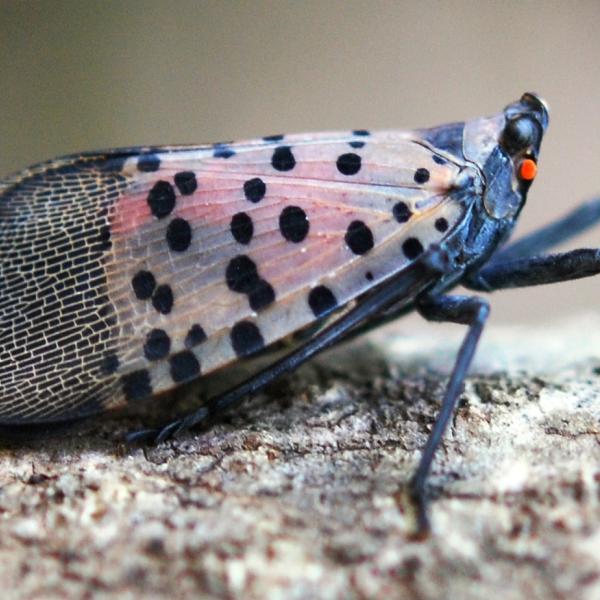
News Source
February 20-26 is National Invasive Species Awareness Week. Each year, organizations around the country use this week to raise awareness about invasive species, the threat they pose and how to prevent their spread.
Most invasive insect infestations are first discovered by alert community members with early detection being the key to slowing the spread, if not eradicating these pests. In Vermont three invasive forest pests of concern to watch for are the hemlock woolly adelgid, beech leaf disease and spotted lanternfly.
For information and help in identifying these pests, visit www.vtinvasives.org. If you spot signs of any of these, please take photos and click on the "Report It!" link on the website to report your findings.
HEMLOCK WOOLLY ADELGID
Hemlock trees are a keystone species in northern forests, providing food, shelter and shade to wildlife across the region. The hemlock woolly adelgid, a small, aphid-like insect that feeds on sap at the base of hemlock needles, threatens this important tree. It is currently present in Windham, Windsor and Bennington counties but has the potential to move north.
Winter is the perfect time to look for signs of this pest. Check the underside of hemlock branches for small, white, cottony masses lined up along the twigs.
Birds spread this tiny insect on their feet and feathers. To help prevent the spread, don't put bird feeders near hemlock trees, and take bird feeders down during spring and summer. If visiting an infested area, clean off your footwear, backpacks and any outdoor gear before leaving to avoid introducing the pest to non-infested areas.
BEECH LEAF DISEASE
Beech trees are an important species for Vermont's wildlife. Beech nuts are a food source for many animals. Cavities provide nesting spaces and dens for both birds and mammals.
Beech leaf disease was first discovered in North America in Ohio in 2012. Although not yet detected in Vermont, it has been found in 12 states including New Hampshire, Massachusetts and New York.
The disease is caused by a nematode (Litylenchus crenatae mccannii) introduced from Japan. It affects both American and European beech trees, causing leaf deformation, dieback and mortality of infested hosts.
You can check for beech leaf disease once the leaves unfurl in the spring. Infested leaves may have a dark striping pattern parallel to the leaf veins. The darkened area is slightly raised and thicker than the rest of the leaf tissue. It is most apparent when viewing from below.
You may see aborted buds, which appear as crispy empty buds on an infested branch. Lighter colored striping may occur. Leaves may become curled or shriveled, discolored and deformed.
SPOTTED LANTERNFLY
Spotted Lanternfly is a sap-feeding insect that has caused considerable damage to vineyards, orchards and other agricultural commodities in states where it has become established. This pest harms grapevines, hops and more than 100 other host plants. In addition, it has had a significant impact on outdoor recreation when populations are high and adult lanternflies are swarming in large numbers, coating surfaces with sticky honeydew.
This pest was first discovered in Pennsylvania in 2014, and infestation has since spread to 14 states including Massachusetts, Connecticut, Delaware, Maryland, New Jersey and New York. While no established populations have been found in Vermont, it's important to be on the lookout for this invasive insect to prevent it from becoming established here.
All phases of this insect are strong hitchhikers and can easily be moved long distances on vehicles and other items. The adults will lay eggs on any surface. These egg masses are the primary way the pest is spread to new locations.
If you are traveling through an infested area or ordering plants or outdoor items from states with infestations, look for irregular egg masses that look like dried mud on your vehicle and other items. Scrape off egg masses and squash any nymphs or adults you find to avoid spread.
Finally, remember that firewood is one of the primary ways that invasive insects and diseases are transported. To prevent the spread of these pests, do not move firewood long distances. Instead, buy firewood near where you will burn it, buy certified, heat-treated firewood ahead of time or gather on site where permitted.
Photo Credit: Lawrence Barringer, Bugwood.org